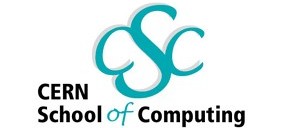|
|
 |
|
|
|
|
|
Printable Version |
|
|
iCSC2005
Web Services in Distributed Computing Theme
Details of all lectures
Introduction to Web Services
| |
|
Friday 25 February |
|
|
09:00 - 09:55 |
Lecture 1 |
Introduction to Web Services |
Ioannis Baltopoulos |
This lecture sets the scene for the rest of the Web
Services Theme. It covers the motivation behind Web
Services and its relative position within the
Distributed Computing market. In the second part of the
lecture, we attempt to revisit some basic technologies
that are required for Web Services like XML, WSDL and
SOAP. The lectures will go so deep into these
technologies as it is required for understanding web
services and the material that is included in the
lectures to follow.
Breakdown
-
Web Services
Basic definition of the technology and some
motivation for it. Benefits of Web Services compared
to other distributed systemís technologies.
-
Distributed Systems
Existing distributed systemís technologies like
CORBA, COM and RMI.
-
Service Based Architectures
The basic architectures that one can have with web
services and how they are used to solve a scientific
problem.
-
XML Primer
Introduction to XML. Elements, Attributes,
Processing Instructions defined and composed into a
small example useful for web services.
-
XML Namespaces
The problem that arises by the flexibility of
defining your own tags in XML and how it is solved
using Namespaces
-
XML Schema
Giving predefined structure to XML documents using
the XML Schema
-
WSDL
The WSDL as a specific XML Schema for describing Web
Services
-
SOAP
The protocol that makes Web Services actually work.
|
Consuming, Providing & Publishing Web Services
| |
|
Friday 25 February |
|
|
10:05 - 11:00 |
Lecture 2 |
Consuming, Providing & Publishing Web Services |
Ioannis Baltopoulos |
This
lecture is the core of the whole Theme. Starting from
where the last lecture finished it puts the introductory
knowledge to work! We start by describing the necessary
software environment and we then gradually build up our
knowledge by first describing how to write Web Service
Clients (Consumers) and following that how to write
actual Web Services (Producers). The lecture closes with
some information about how to structure a Web Services
project in general and how to deploy the services on a
production server and publish the information to a UDDI
registry.
Breakdown
-
Basic Environment
The whole lecture is based on developing Web
Services using Java (the language), Eclipse (the
IDE), Ant (the build mechanism) and of course Axis
(the WS platform). We spend a few moments
introducing the tools and learning how to use them.
-
Writing Consumers
Web Service clients can be written in a plethora of
programming languages. In this section we will be
demonstrating how this is done using Java and time
permitting Macromediaís Flash!
-
Writing Producers (Within Axis)
How to write a simple service within the Axis web
application. This is the basic way of providing a
web service; it provides a reasonable amount of
flexibility but has some drawbacks.
-
Writing Producers (Standalone)
We will show how standalone web applications that
offer a web service interface can be used to
overcome the limitations from deploying Web Services
within the Axis Web Application. This part of the
lecture is based on a substantial example whose code
will be given out after the lecture.
-
Deploying the Services
Description of the two ways web services can be
deployed on production servers. This section will
cover instant deployment and deployment through web
service descriptors and web application deployment
tools.
-
Structuring a WS Project
Moving away from the technology specifics, this
section of the lecture aims at giving practical
advice to the audience about how to structure a WS
project and how existing code can be incorporated in
the one.
-
Publishing a WS using UDDI
The last section will demonstrate how to dynamically
publish a Web Service to a UDDI registry from where
it can be found by consumers.
|
Advanced Issues and Future Trends
| |
|
Friday 25 February |
|
|
11:30 - 12:25 |
Lecture 3 |
Advanced Issues and Future Trends |
Ioannis Baltopoulos |
The
last lecture of this series will go into dynamic
publishing and consumption of web services and how to
secure them. It explains the usefulness of the Public
Key Infrastructure in the context of Web Services and
how a Web Service could authenticate consumers and
guarantee secure communications. In closing it will
mention the current work that is taking place in the
area like transactions, interoperability and reliable
messaging. It will then give a glimpse into the future
of Web Services with self-adapting architectures over
the Grid.
Breakdown
-
Dynamic Publishing using UDDI
-
Dynamic Consumption using UDDI
-
XML Encryption
-
Digital Signatures
-
WS-Reliable Messaging
-
WS-Transactions
-
Dynamic Architectures
-
WS
on the Grid
|
|
|
|
|
|
|
|
|

